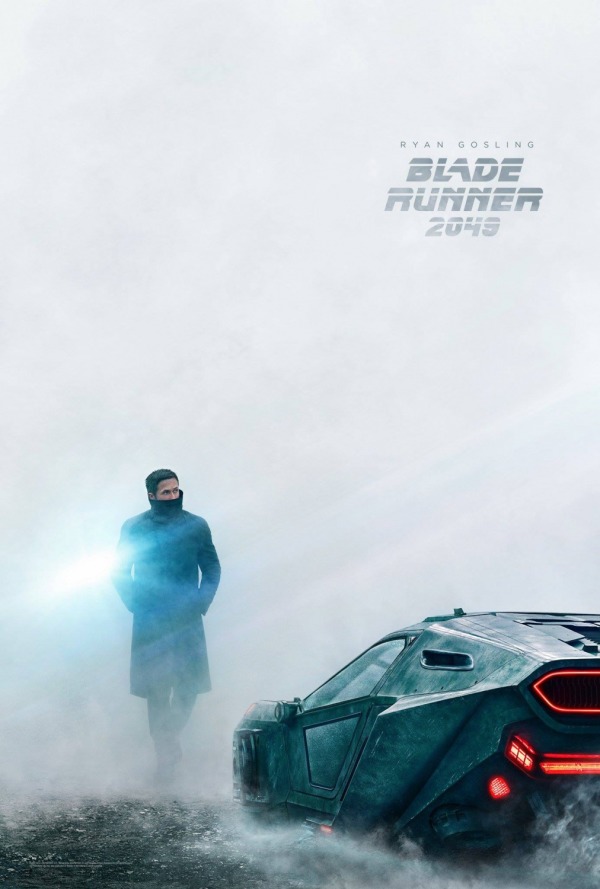BLADE RUNNER (directed by Denis Villeneuve, 163 minutes, 2017, USA)
 BY CHRISTOPHER MALENEY FILM CRITIC Ridley Scott’s Blade Runner, is without a doubt, one of the most visionary and influential science-fiction films ever created. Set in 2019 and released in 1982, Scott’s film uncannily predicted our current age some 35 years ago. While some aspects of the film’s vision of the future — flying cars, police ziggurats and android slaves known as replicants hunted down by bounty hunters known as Blade Runners once they reach their expiration date — still seem a ways off, others — the domination of humanity by a corporate technocracy, the privatization of executive and judicial power, and the utter disregard for worker’s rights — are already here.
BY CHRISTOPHER MALENEY FILM CRITIC Ridley Scott’s Blade Runner, is without a doubt, one of the most visionary and influential science-fiction films ever created. Set in 2019 and released in 1982, Scott’s film uncannily predicted our current age some 35 years ago. While some aspects of the film’s vision of the future — flying cars, police ziggurats and android slaves known as replicants hunted down by bounty hunters known as Blade Runners once they reach their expiration date — still seem a ways off, others — the domination of humanity by a corporate technocracy, the privatization of executive and judicial power, and the utter disregard for worker’s rights — are already here.
The newest iteration, Blade Runner 2049, takes us 30 years beyond the original’s dystopian future. The first film’s events have thrown society into even deeper troubles as people try to make sense of a world without the vast trove of data — financial records, medical records, historical records — that was wiped out by the 2020 blackout. The divide between the haves, with their robot slaves and cybernetic upgrades, and the have-nots has grown all the more extreme as the mega-corporations and their pawns struggle to restore order to the blighted world.
While previous generations of replicants could be identified by their lack of empathic responses to the oblique questions of the Voight-Kampff test, these rules have lately gone out the window. Now, replicants can apparently innately tell each other apart from humans, but only when the plot requires it. Most of the time they need to rely on serial codes found on bones, or under an eyeball.
When chasing down a rogue android, one of the Blade Runners, K (Ryan Gosling), makes the shocking discovery that suggests replicants may be able to procreate despite being engineered to the contrary, thereby elevating the soulless robots to near-human status. If this information leaked to the general public, the underlying narrative of social order would be threatened. Tasked with locating and eliminating any replicant spawn, K chases down leads in sprawling post-apocalyptic junkyards mined by orphan children and the irradiated remnants of Las Vegas as he begins to question not only his own function as a keeper of order in a disordered world, but the deaths required to keep that order, like how Rick Deckard (Harrison Ford), the titular Blade Runner from the first movie, did before him. If this were the single story being told, the movie would be great. As it is, just when K’s storyline should be wrapping up, Rick Deckard shows up and draws out what should be the third act by a degree that makes the story begin to feel unwieldy.
Still, the film is a marvel of cinematic wizardry, and the visuals carry it to its end. The blue lights of the rainy Los Angeles and the orange fog that shrouds the ruins of Las Vegas all telegraph the evolving morality of the primary characters. The endless blocks of interchangeable gray tenements and the massive advertising holograms offer a nightmarish vision of what Los Angeles will eventually become. Closeups of eyeballs and small, handcrafted statuettes mimic the imagery of the first film. As with the original film, the costumes are simultaneously futuristic — such as the environmental suit of the grub-farmer in the opening scene — and elegant, like K’s high-mouthed turtleneck coat which would not seem outlandish in 2017. The score is minimalist, lo-fi pulsing that is suitably mood-altering, but the Noise of Something Important About To Happen that is used at least three times a scene eventually grows annoying.
The great sin of Blade Runner 2049 is that it tries to do too many things at once. It wants to pay homage to the original movie in its imagery, its characters and its story. It wants to create a new, standalone audio-visual spectacle that defines our current age and crises. It wants to spark a revolution where the workers overthrow the exploiters. It wants to make us re-think our increasingly symbiotic relationship with technology. Perhaps least forgivably, it wants to create a new bankable cinematic universe where an endless number of sequels are required to explain a complex, densely-layered overarching narrative while simultaneously making Sony lots of money. If it only wanted to do one or two or even three of these things, we would have an iconic sequel to a classic movie. Instead, despite its eye-dazzling doomscapes and moody noir atmospherics, Blade Runner 2049 feels cluttered and overlong, never quite achieving artistic parity with its predecessor.

